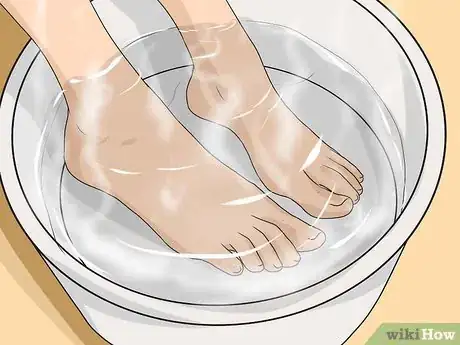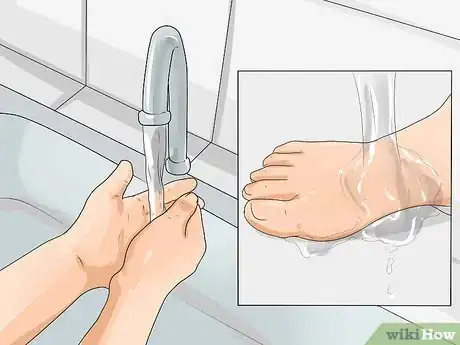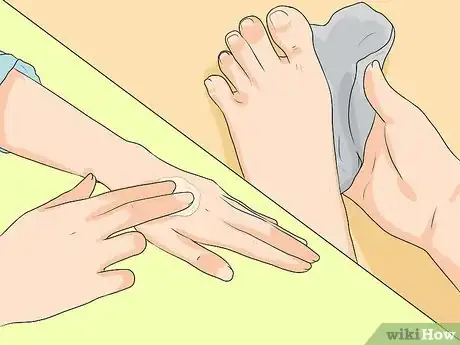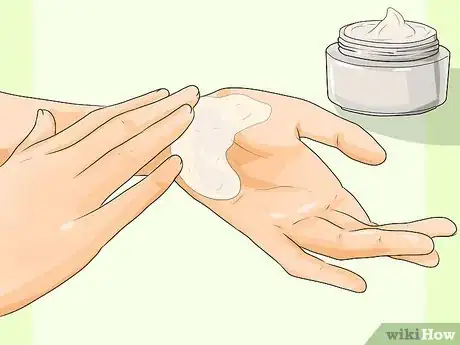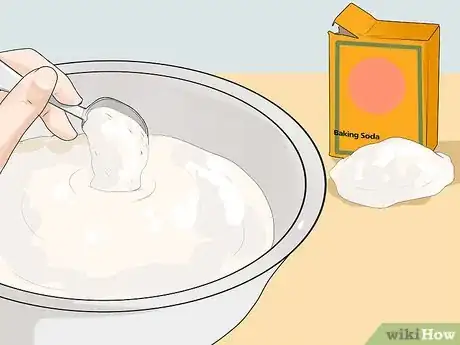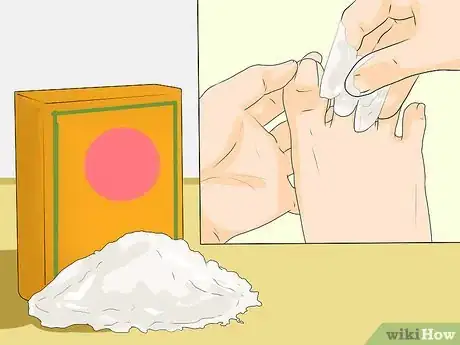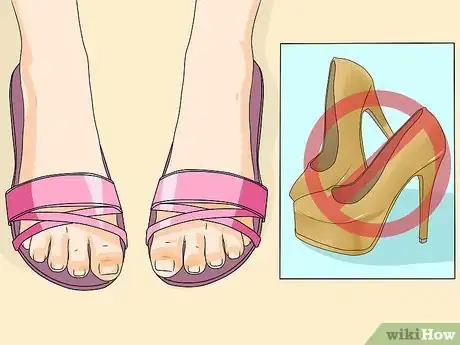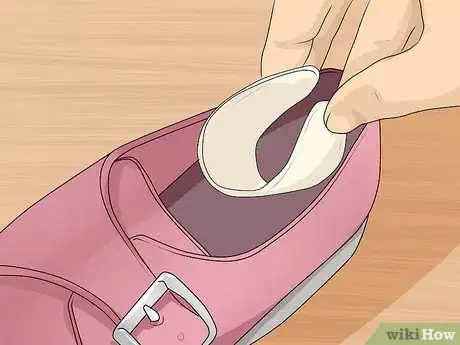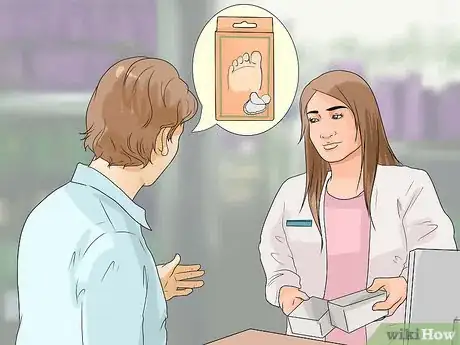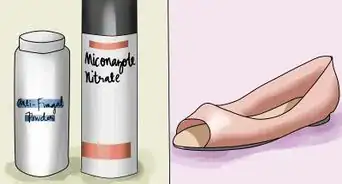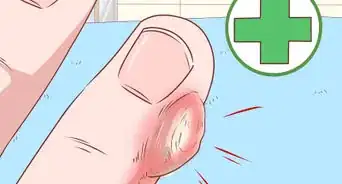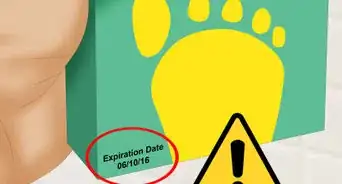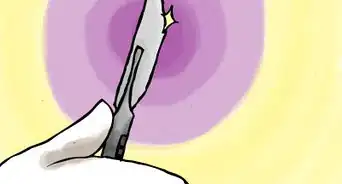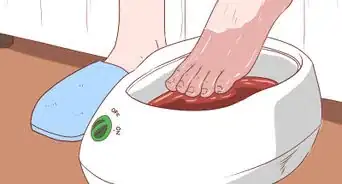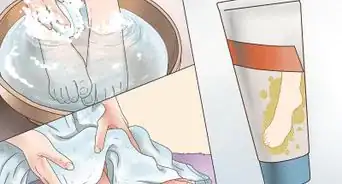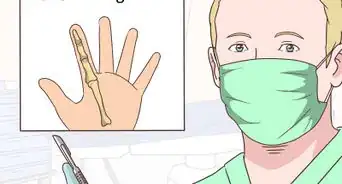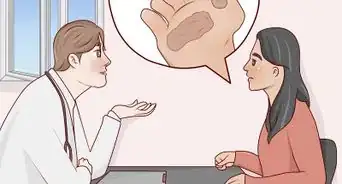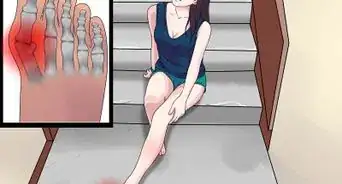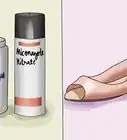This article was co-authored by Lydia Shedlofsky, DO. Dr. Lydia Shedlofsky is a Resident Dermatologist who joined Affiliated Dermatology in July of 2019 after completing a traditional rotating internship at Larkin Community Hospital in Miami, Florida. She earned a Bachelor of Science in Biology at Guilford College in Greensboro, North Carolina. After graduation, she moved to Beira, Mozambique, and worked as a research assistant and intern at a free clinic. She completed a Post-Baccalaureate program and subsequently earned a Master's Degree in Medical Education and a Doctorate of Osteopathic Medicine (DO) from the Lake Erie College of Osteopathic Medicine.
There are 7 references cited in this article, which can be found at the bottom of the page.
wikiHow marks an article as reader-approved once it receives enough positive feedback. This article received 23 testimonials and 87% of readers who voted found it helpful, earning it our reader-approved status.
This article has been viewed 2,369,771 times.
Calluses are an area of thick, hardened skin, usually on the palms of your hands or soles of your feet. Calluses form as a result of too much pressure or friction on one area of the skin, such as by wearing shoes that are too tight. Your body forms calluses as a protective measure. They can cause discomfort and misery in addition to just being downright annoying. There are some things you can do to get rid of calluses, however. In particular, you should consult your doctor first if you are not sure how the callus formed or if you are diabetic.
Steps
Using Standard Treatment Options
-
1Soak your hands, feet or elbows in warm/hot water for ten minutes. The skin should start to soften. You may add Epsom salts, bath oils, or even tea if you like, but they're not necessary.[1]
-
2Using a pumice stone, or foot file, scrub your calluses. Be sure to periodically clean the stone or file. Do not overly scrub your feet/hands. 5 minutes is enough time. You want to slowly take down the callus over a month or so. If you begin to feel pain or after you have removed a couple layers of skin, stop.
- Do not use a pumice stone if you are diabetic.[2]
Advertisement -
3Wash your feet/hands. Use a washcloth to scrub your calluses.[3] Make sure that you clean off all of the dead skin.
-
4Pat dry and rub lotion on your feet/hands. Use a thick foot or hand lotion to hold in extra moisture.[4] Lotions with Urea in them are particularly good.
- If you are about to go to bed, put on socks or gloves to hold in the moisture and lotion.
- Repeat this entire process at the end of every week.
-
5Maintain your soft hands/feet. Reapply lotion to the callused area after showering. Use a thicker cream for the best results.
- Regularly moisturizing your hands and feet will help prevent dry and rough spots.[5]
Trying Home Remedies
-
1Use aspirin to soften your calluses. Crush five or six tablets of aspirin and mix them with one-half teaspoon (3 g) of lemon juice and water. Apply the resulting paste to the affected area, then wrap it with a warm towel and cover it with a plastic bag. Leave it for about ten minutes and then remove the coverings. Scrape off the calluses with a pumice stone.
- Again, if you're diabetic, don't try this treatment. Also, if you're allergic to aspirin, do not use this method.
-
2Try baking soda. One of the best ways you can treat corns and calluses is with a warm-water soak. This loosens the dead skin and helps with healing. Add 3 tablespoons baking soda to a basin of warm water and soak -- baking soda has a pH of 9 and is therefore alkaline and can disrupt the skin barrier.[6]
- Or massage calluses with a paste of 3 parts baking soda to 1 part water.[7]
-
3Put chamomile tea in your soak. Soaking your feet in diluted chamomile tea can be soothing and will temporarily change the pH of the skin to help dry out sweaty feet. The tea will stain your feet, but the stain can be easily removed with soap and water.[7]
-
4Utilize cornstarch. Sprinkle cornstarch between your toes to keep the area dry and protect the skin from breaking down. Moisture can make a corn or callus feel miserable and can promote fungal infections. [7]
- This is more preventative than anything and should be used to eliminate discomfort.
-
5Consider using vinegar. Soak a cotton ball in vinegar and tape it to your corn or callus. Leave the vinegar-soaked cotton on overnight. In the morning, rub the area with a pumice stone.[7]
- Make sure to attach the cotton ball only to the callus itself. You don't want to irritate the skin around it that is doing just fine.
-
6Put a pineapple to good use. Pineapple peel contains certain enzymes which help in softening corns and calluses and removing them from the skin. Place a small piece of fresh pineapple peel over the affected area and wrap a clean cloth around it. Do this every night for a week. You can also apply pineapple juice to the corns.[8]
Using Special Footwear and Foot Products
-
1Change your footwear. One of the most common causes of calluses is simply that the wrong shoe is being worn. If your shoes fit badly, calluses are more likely to form -- so go get yours personally fitted. They should be snug (but not hurt) and cater to the width of your feet and you should be able to wiggle your toes easily.[9]
- Avoid heels whenever possible; they put all your weight on the ball of your foot -- a recipe for calluses, indeed. Wear flats whenever you can; they're more comfortable, too.
- If the calluses are on your hands, wearing padded gloves with a comfortable fit will alleviate and lessen the problem of developing calluses. Make sure that the gloves fit well; very loose gloves will do the opposite and irritate your skin more through the constant friction they produce.[10]
-
2Pad your shoes. Calluses are not an uncommon phenomenon; as a result, some companies have started making shoe liners designed to get rid of them.[11] Many are made out of moleskin and easily slip into your shoes in the shapes of strips or patches.
-
3Look into medicated solutions and pads. You don't necessarily have to go to a doctor to find medications to alleviate the problem; pads, plasters, and other medications can be found over-the-counter fairly easily. However, most of them contain salicylic acid as one of the active ingredients -- and this can cause irritation or infection that can be more annoying (or serious) than what you were originally dealing with. If you fit one of the following conditions, it's best to avoid these:[12]
- If you have diabetes
- If you have reduced feeling in your feet, either from circulation problems or from neurological damage
- If you have poor eyesight or flexibility and may not be able to use the product properly
Warnings
- Do not overly scrub. You can get an infection from breaking too much skin.⧼thumbs_response⧽
- Don't cut calluses at home. See a podiatrist, podologist or Esthetician instead.⧼thumbs_response⧽
- If you have diabetes, do *not* remove the calluses yourself! This can worsen bad circulation. Consult your physician instead.⧼thumbs_response⧽
- Do not use any acidic callus removers; these will often make your skin even dryer. Be especially careful if you use any over the counter remedies with salicylic acid in them. They can cause the skin to break.⧼thumbs_response⧽
References
- ↑ http://www.mayoclinic.org/diseases-conditions/corns-and-calluses/manage/ptc-20317286
- ↑ http://www.mayoclinic.org/diseases-conditions/corns-and-calluses/manage/ptc-20317286
- ↑ http://www.mayoclinic.org/diseases-conditions/corns-and-calluses/manage/ptc-20317286
- ↑ https://www.aad.org/public/diseases/a-z/ringworm-self-care
- ↑ Lydia Shedlofsky, DO. Dermatologist. Expert Interview. 30 September 2020.
- ↑ https://sciencing.com/ph-level-baking-soda-5266423.html
- ↑ 7.07.17.27.3http://health.howstuffworks.com/wellness/natural-medicine/home-remedies/home-remedies-for-calluses-and-corns2.htm
- ↑ http://www.home-remedies-for-you.com/remedy/Corns.html
- ↑ https://my.clevelandclinic.org/health/diseases/16896-corns-and-calluses
About This Article
To get rid of calluses, soak the affected area in warm water for 10 minutes, then rub the callus gently with a pumice stone and follow up with an intensely hydrating lotion or cream. Try to perform this ritual every week and consider adding Epsom salt, baking soda, or chamomile tea to the warm water soak to increase its healing and soothing effects. To protect your skin and prevent the same calluses from returning, be sure to change your footwear, add padded inserts to your shoes, or wear protective gloves! To learn more about softening calluses with aspirin, read on!
